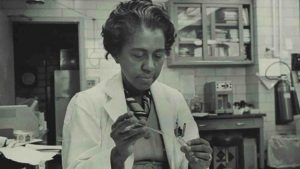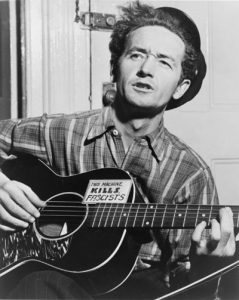At the Heart of Things
CONNECTIONS
The Pulse and Politics of the Environment, Peace, and Justice
Bob Musil, President, Rachel Carson Council
“In nature nothing exists alone.”
“The aim of science is to discover and illuminate truth. And that, I take it, is the aim of literature, whether biography or history… It seems to me, then, that there can be no separate literature of science.”
“If the Bill of Rights contains no guarantee that a citizen shall be secure against lethal poisons distributed either by private individuals or by public officials, it is surely only because our forefathers, despite their considerable wisdom and foresight, could conceive of no such problem.”
— Rachel Carson
08-15-17
I should be deeply indebted to Marie Maynard Daly. The problem is, I never even heard of her until this week when I happened upon an online magazine called Undark and its series Unsung: African-American Pioneers in Science. Marie Daly undoubtedly helped prolong my Dad’s life after he developed atherosclerosis and she has kept me healthy as a senior white guy downing Crestor while running a growing environmental organization. My father was about the same age as Daly. Both were born in New York. Daly also went, just a few years later, to the same school for smart kids, Hunter College High School, as my mother did.
Marie Daly graduated magna cum laude from Queens College in 1942 with a degree in chemistry and then got her master’s and Ph.D. in chemistry from Columbia. She then was hired as an instructor at Howard University, Washington DC’s elite historically black college. Dr. Marie Maynard Daly was the first African-American woman to earn a Ph. D. in chemistry. But, as importantly, she received grants from the American Cancer Society as a researcher at the Rockefeller Institute, published early peer-reviewed studies on the relationship between cholesterol and heart disease, and joined the faculty of the Albert Einstein College of Medicine in 1960 where, as a professor of biochemistry, she continued to research and publish on atherosclerosis.
How could I have not heard of this pioneering African-American cardiovascular researcher? The answer gets to the heart of the matter. Although my parents and I lived within miles of where Marie Daly was born, grew up, studied, and did critical, groundbreaking research, we lived in two different worlds. Dr. Daly’s achievements came despite deep structural racism in the north where it was politely called de facto segregation.
Marie Daly was the eldest child of Ivan C. Daly and Helen Page. Ivan was one of the few African-Americans able to enroll at an Ivy League college to study chemistry. But he had to drop out of Cornell because of the high cost of tuition. Ivan Daly then became a postal worker in order to provide for his wife and three children. My parents, on the other hand, were able to move out of Manhattan after World War II to Garden City, Long Island, a prosperous, leafy suburb with fine schools that was restricted to whites and gentiles. More affordable suburbs were springing up, too. Numerous veterans used the GI Bill to move out of the city. Yet even the most famous new development, Levittown, had a charter that officially barred African-Americans.
Not far away, in Queens, during the 1950s, urban housing was deeply segregated. Donald Trump’s father, Fred — who had been arrested at a Ku Klux Klan rally in 1927 not long after Marie Daly was born – was named by folk singer/activist Woody Guthrie, who lived in the Trump property, as the epitome of a racist. Guthrie even penned lyrics against racism that specifically named “old man Trump.” Later, in the 1970s, Fred Trump and his son Donald were both sued by the Justice Department for racism in their housing complexes.
While Dr. Marie Daly was unlocking the secrets of hardening arteries, I was able to head off to Yale and graduate school at Northwestern in the 1960s. Yale was the more liberal of the two – my class of 1,000 had four African-Americans (plus an elite track star from Jamaica) and, of course, no women. There were no tenured female faculty members and none of color. Courses in African-American history did not exist. When I arrived at Northwestern and served on the Dean of Men’s staff, the Dean of Admissions carefully examined photographs of all prospects. Suffice to say, until the student uprisings of the late sixties, there were no people of color and few Jews.
The civil rights and black power movements of my college and graduate school years led to my own interest and engagement in African-American history and, finally, to my teaching the history of civil rights and my professional work on environmental racism and justice. When I ran Physicians for Social Responsibility, at a time when black physicians comprised only 3% of the medical profession, my Board of Directors was twenty per cent African-American, including the heads of four historically-black medical colleges.
The Rachel Carson Council that I lead today is committed to environmental justice and inclusion. Two of our main projects focus on the environmental and health problems of African-American communities in North Carolina and Maryland. My own research on environmental leaders led me to extensively research women scientists and to write in Rachel Carson and Her Sisters about America’s first female chemist and environmental health leader, Ellen Swallow Richards; about the environmental author and first female faculty member at Cornell, Anna Botsford Comstock; and about the mother of environmental and occupational medicine, Dr. Alice Hamilton, the first female professor at Harvard. And, of course, about Rachel Carson. Yet all of them were white. I had found that Rachel Carson’s literary agent, Marie Rodell, had promoted Martin Luther King’s first book, Stride Toward Freedom (1957). But I should not have missed Dr. Marie Maynard Daly.
I write this not to wallow in white liberal guilt, but to show that, even for well-informed, educated and sympathetic white scholars and advocates, much of African-American history remains out of view. And I mean, modern, even contemporary history. It should be no shock that we now have a President who has benefitted directly, personally, and financially from our racially oppressive real estate and financial system. That there are lawsuits today that claim prejudice against white people in college admissions is no surprise, but abhorrent. These misguided, racist efforts are either willfully ignorant of or misread America’s recent history.
Leaders in academia, the professions, non-profits, including the environmental movement, who are white have an obligation to expose and work to erase the continuing racism in America, to state without embarrassment that black lives matter, to shout that racism, white supremacy, neo-Confederate, and neo-Nazi views and violence simply will not be tolerated.
And so, I am deeply indebted to Dr. Marie Maynard Daly — for my own father’s health and mine and for her pioneering work on atherosclerosis — but especially for her perseverance and persistence in the face of the deeply divided and racist society in which she was able to achieve so much and help so many.












